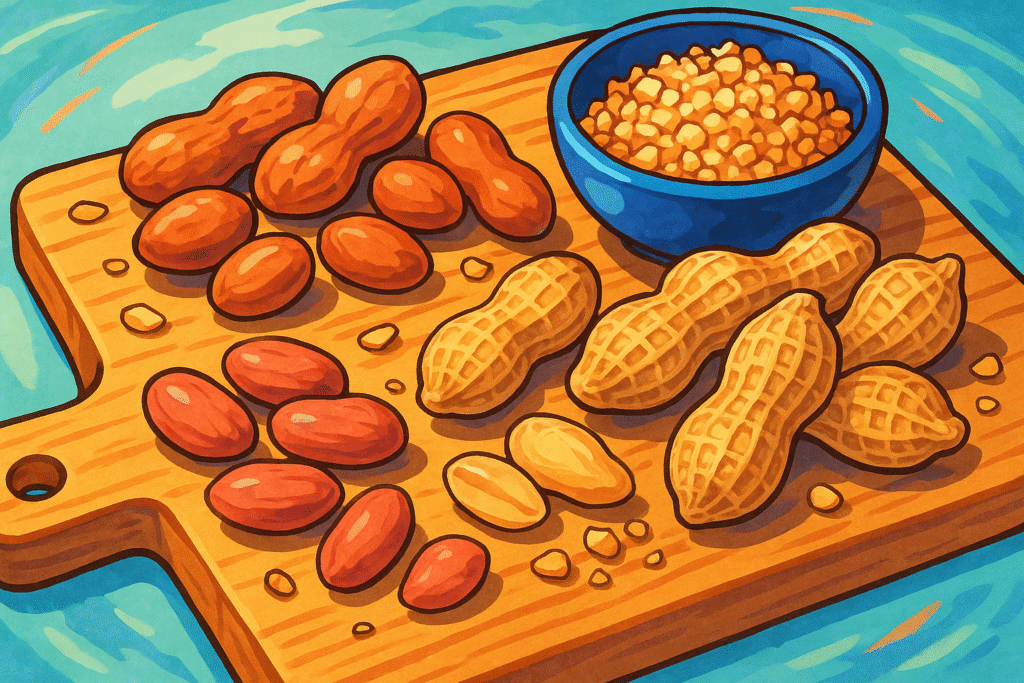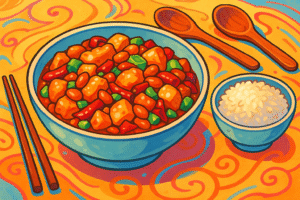Peanut (Arachis hypogaea)

About Peanut
The peanut, or Arachis hypogaea, isn’t actually a nut at all—it’s a legume, growing underground rather than on trees. Peanuts boast a deeply savory, faintly sweet flavor and buttery texture when raw, with their tastiness only amplified by roasting. They are prized for their versatility: think of rich stews, spicy sauces, brittle candies, nutty desserts, and, of course, classic peanut butter. What sets the peanut apart isn’t just its bold, satisfying taste but its status as a crucial source of protein, oil, and sustenance across continents.
The History of Peanut
Native to South America—most likely the valleys of modern-day Bolivia and northwest Argentina—peanuts were domesticated by Indigenous peoples over 7,000 years ago. They spread northward and southward within the Americas, figuring into Moche pottery in Peru and Aztec diets in Mexico. When Spanish and Portuguese traders sailed home, peanuts journeyed across the Atlantic, rooting themselves in Africa via Portuguese trade routes and later across Asia, where they became embedded in cuisines from Ghanaian groundnut stew to Indonesian gado-gado. In West Africa, peanuts (locally called groundnuts) reshaped cooking traditions, becoming a staple in both urban and rural pantries.
The Science of Peanut
Peanuts are a nutritional powerhouse. A 100-gram serving packs about 25 grams of plant-based protein, alongside hearty doses of folate, niacin, vitamin E, magnesium, and phosphorous. Their oil content—nearly 50%—makes them a staple crop for cooking oil production. Peanuts owe their characteristically nutty flavor to roasted pyrazines, aromatic compounds formed during roasting. They also contain beneficial resveratrol, the same antioxidant found in red grapes, along with heart-healthy monounsaturated fats. Notably, peanuts are a common allergen; their proteins can trigger strong immune responses in sensitive individuals.
The Geography of Peanut
Today, major peanut-growing regions span the globe, with China, India, Nigeria, and the United States as top producers. Soil quality and climate significantly shape peanut flavor and texture: the sandy soils of Georgia (USA) yield large, mild-flavored peanuts perfect for snacking, while West African varieties tend to be smaller, sweeter, and richer in oil—ideal for sauces and stews. In China, Shandong province is well known for small, dense-seeded varieties used for oil extraction and snacks. In Brazil and other parts of South America, heirloom strains echo the crop’s ancestral roots.
Varieties of Peanut
Virginia
Large, plump seeds with a mild, subtly sweet taste and crunchy bite. Popularly used as salted, roasted snacks and in shelled form thanks to their size.
Spanish
Small, red-skinned peanuts with a pronounced flavor and higher oil content. They’re the variety of choice in Mexican candies, peanut brittle, and flavorful peanut butters.
Valencia
Typically found in clusters of three or more small, intensely sweet seeds per pod. Their bright red skins and sweetness make them favorites for fresh-roasted or boiled peanuts, especially in South America and the U.S. South.
Runner
Uniform, medium-sized peanuts with balanced flavor and consistent shape. The darling of commercial peanut butter in many countries, thanks to their reliability and smooth grind.
Chinese (Shandong)
Compact, oil-rich nuts with earthy, slightly herbal undertones. Widely grown for pressed peanut oil and pickled or spiced snack peanuts in China.
Top Dishes Containing Peanut
FAQs All your questions about Peanut: answered
Are peanuts good for you?
Yes, peanuts are rich in plant-based protein, healthy fats, fiber, and several vitamins and minerals. They provide energy, aid in heart health, and support immune function, though portion control is key due to their calorie density.
Why are peanuts called “groundnuts” in some countries?
Peanuts develop underground, unlike tree nuts. In many African, Asian, and Commonwealth countries, “groundnut” reflects both the growing method and the botanical distinction from true nuts.
What dishes showcase peanuts around the globe?
Peanuts shine in West African groundnut stews, Indonesian satay sauces, Chinese spicy noodles, Brazilian paçoca, and Indian chikki (brittle). They’re as at home in street snacks as in festive meals.
Can you eat peanuts raw?
Yes, raw peanuts are safe to eat—where legally available. They have a milder, earthy taste, but roasting them deepens flavor and boosts aroma.
Why do some people have peanut allergies?
Certain peanut proteins can strongly activate the immune system. Genetics, early exposures, and local eating habits all impact allergy prevalence. Peanut allergy rates and awareness vary around the world.
